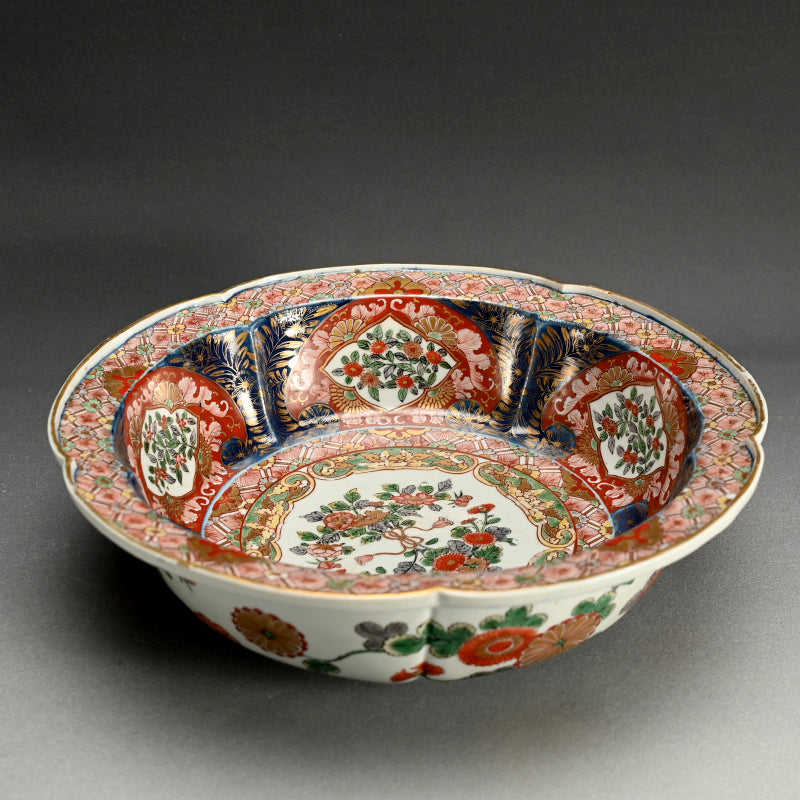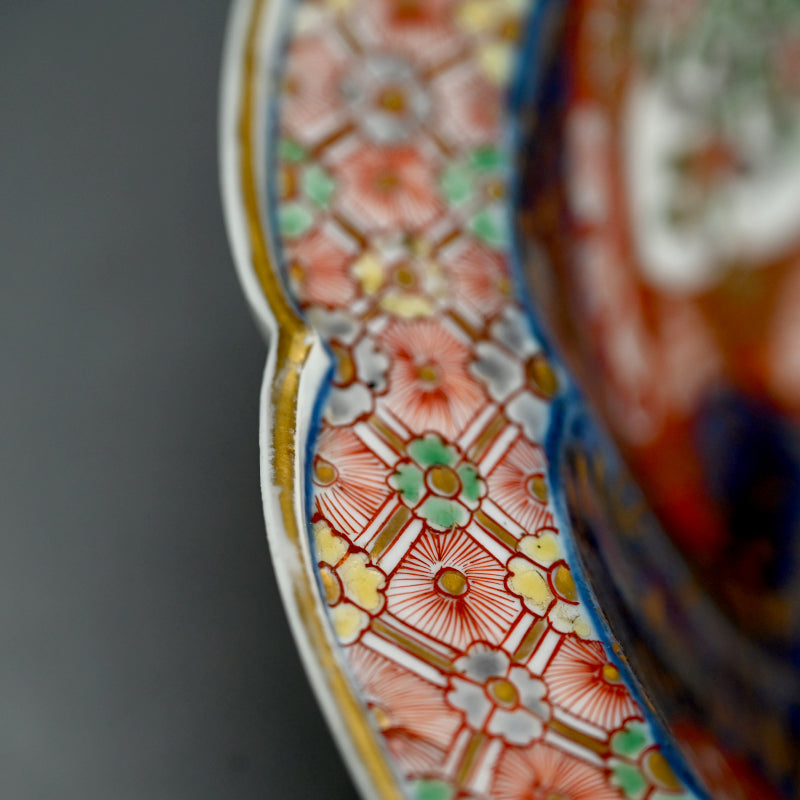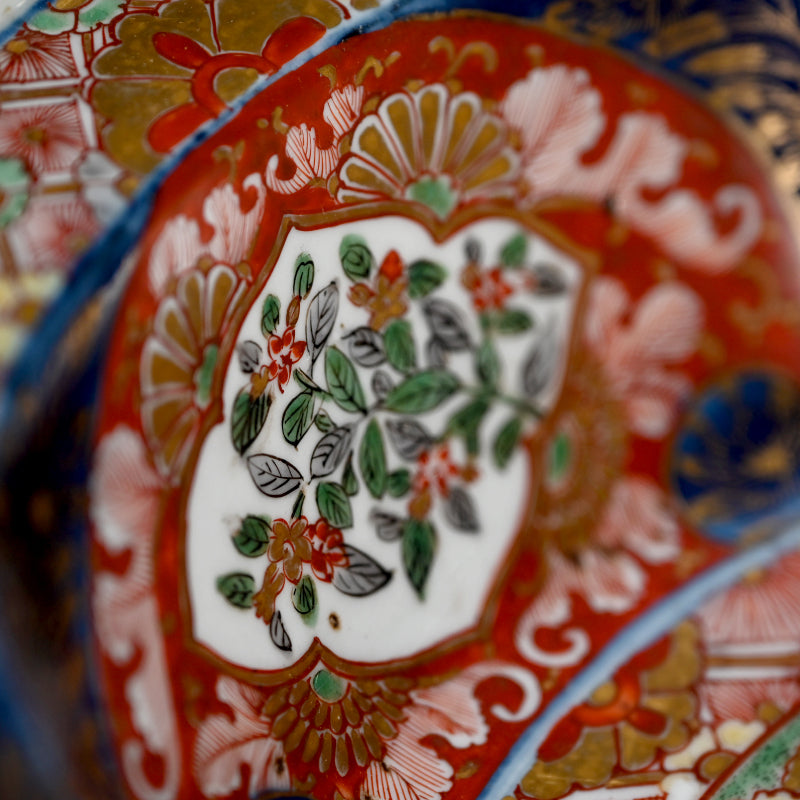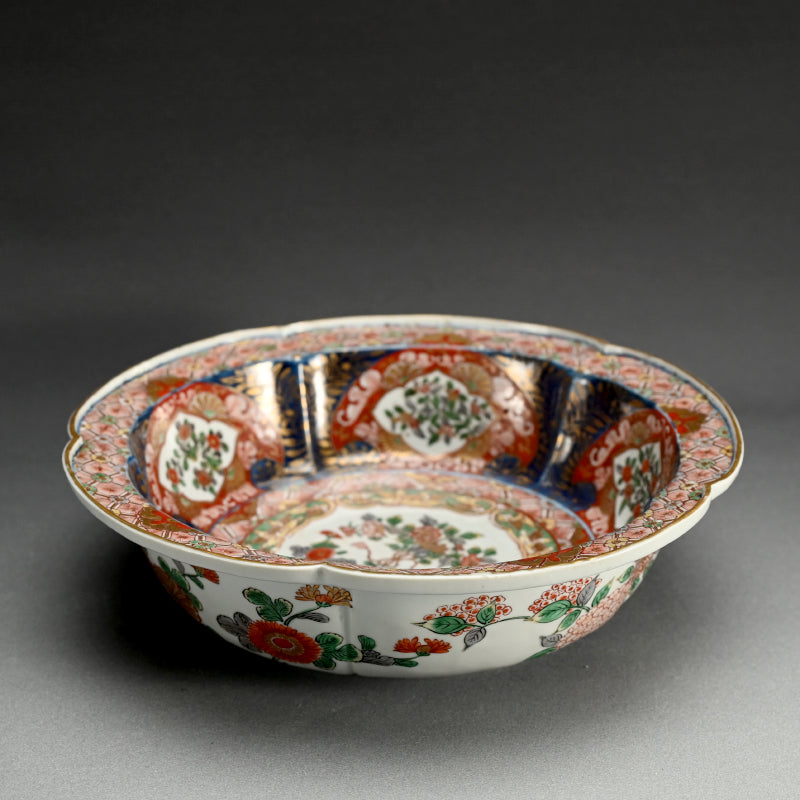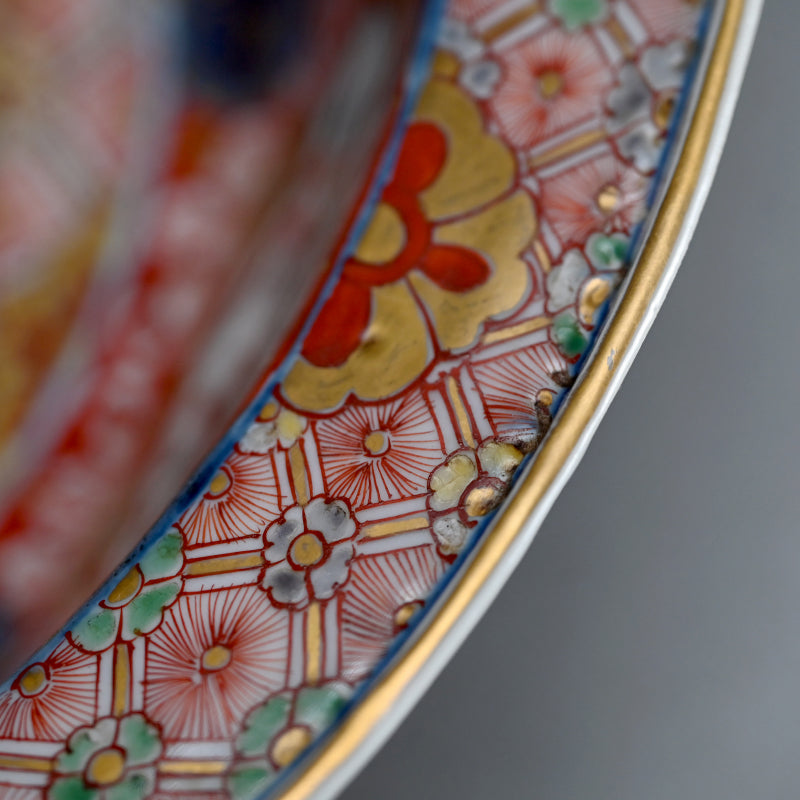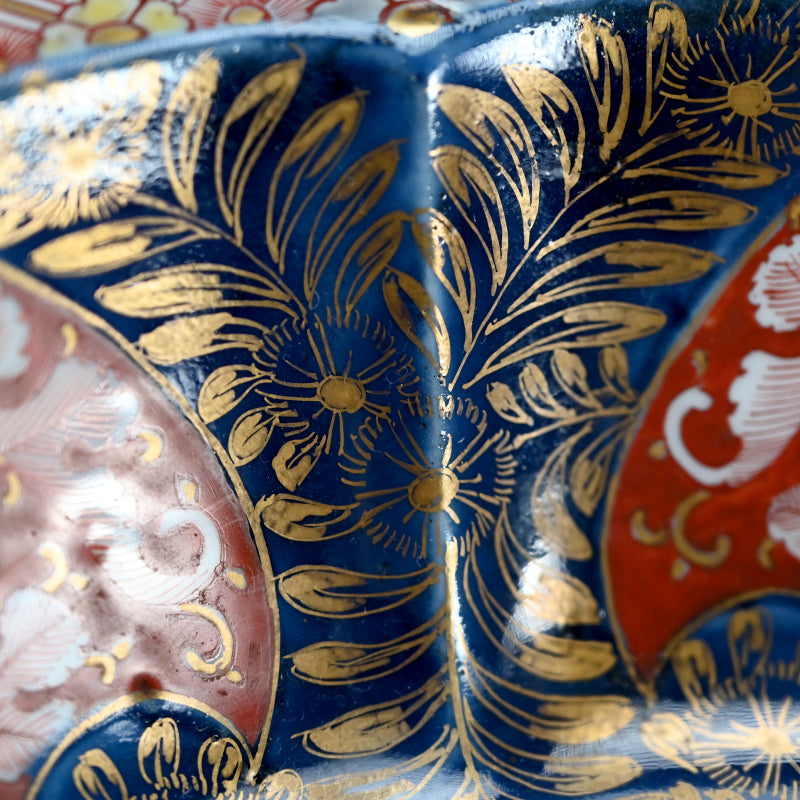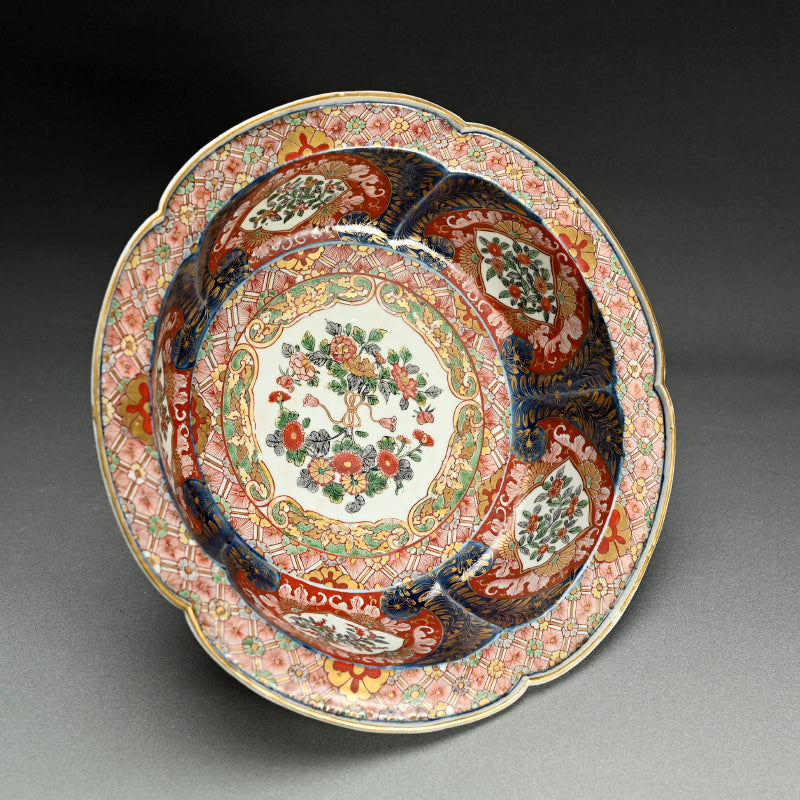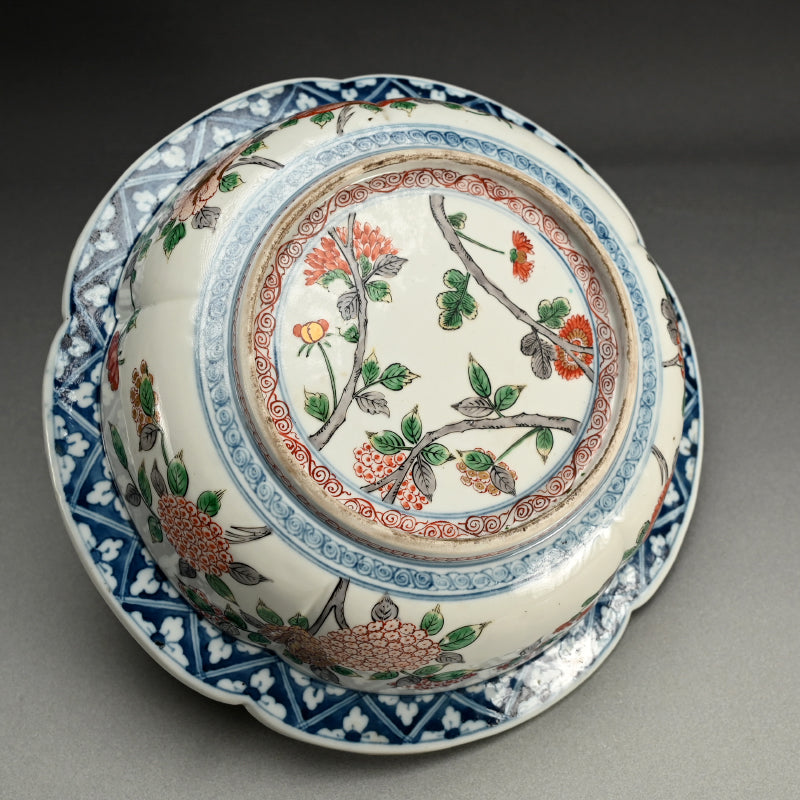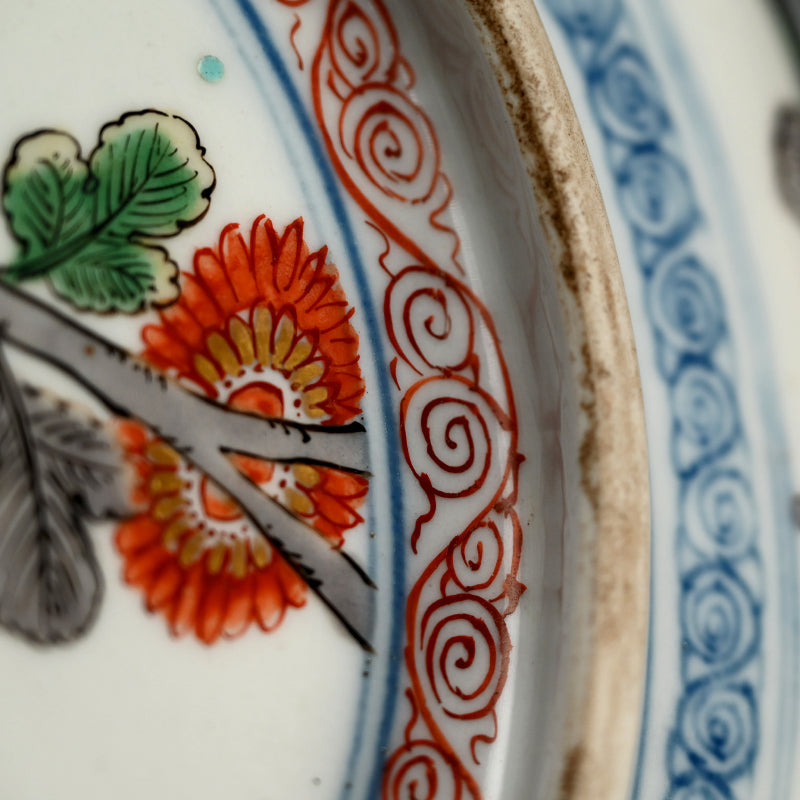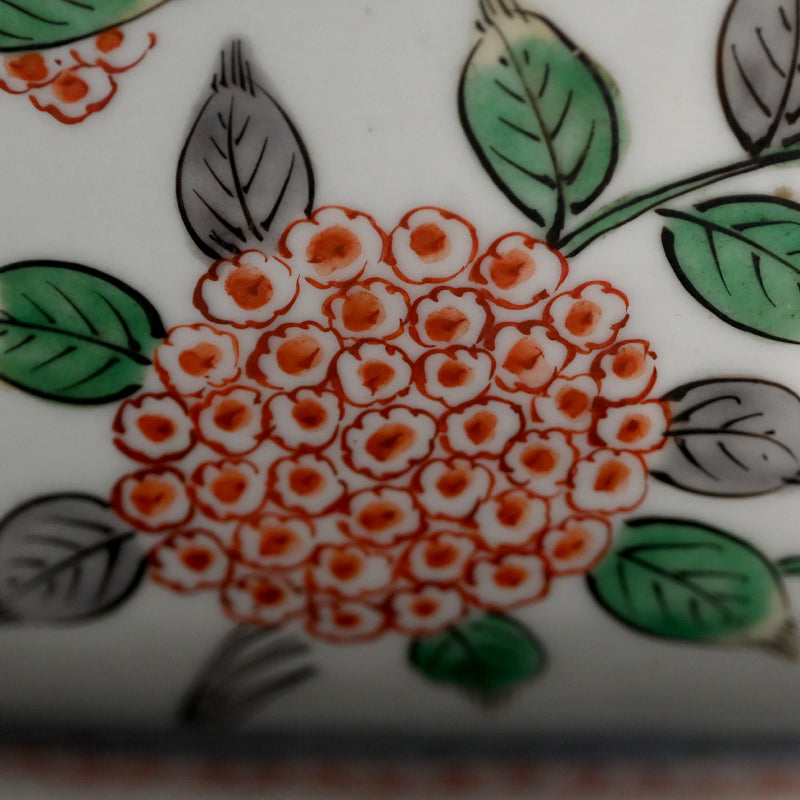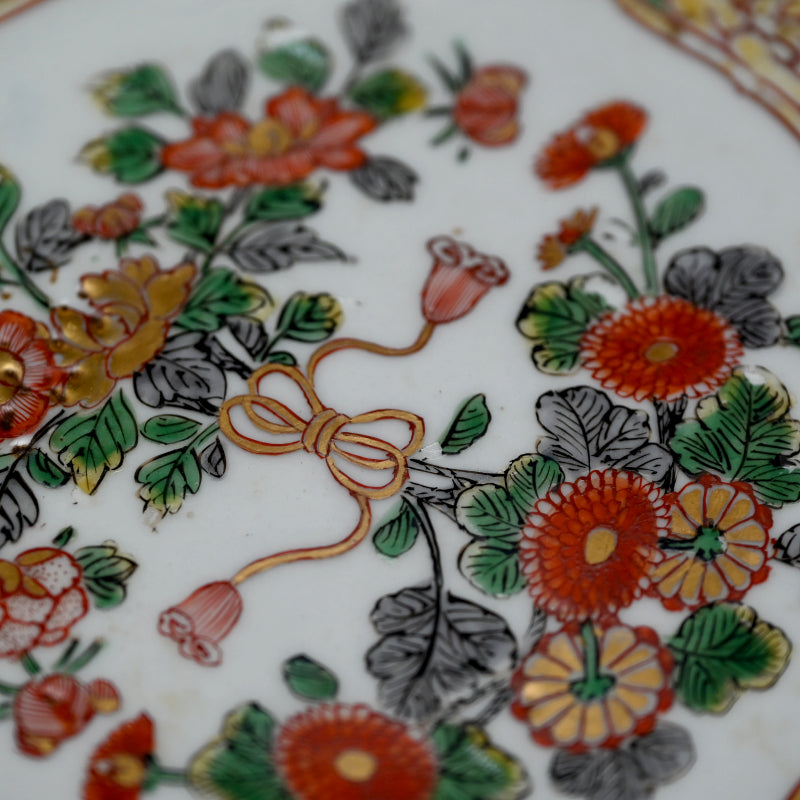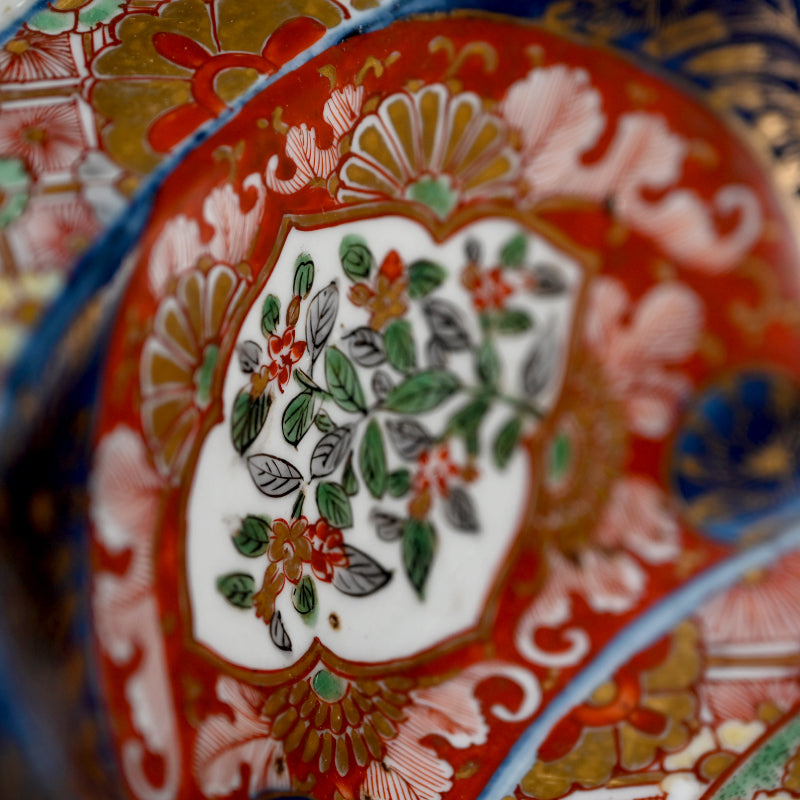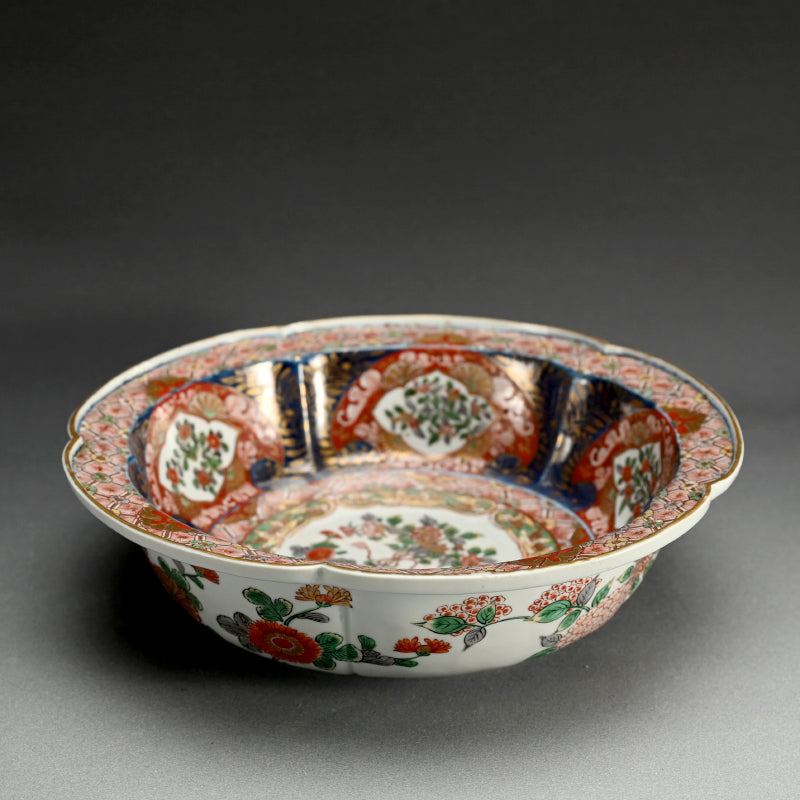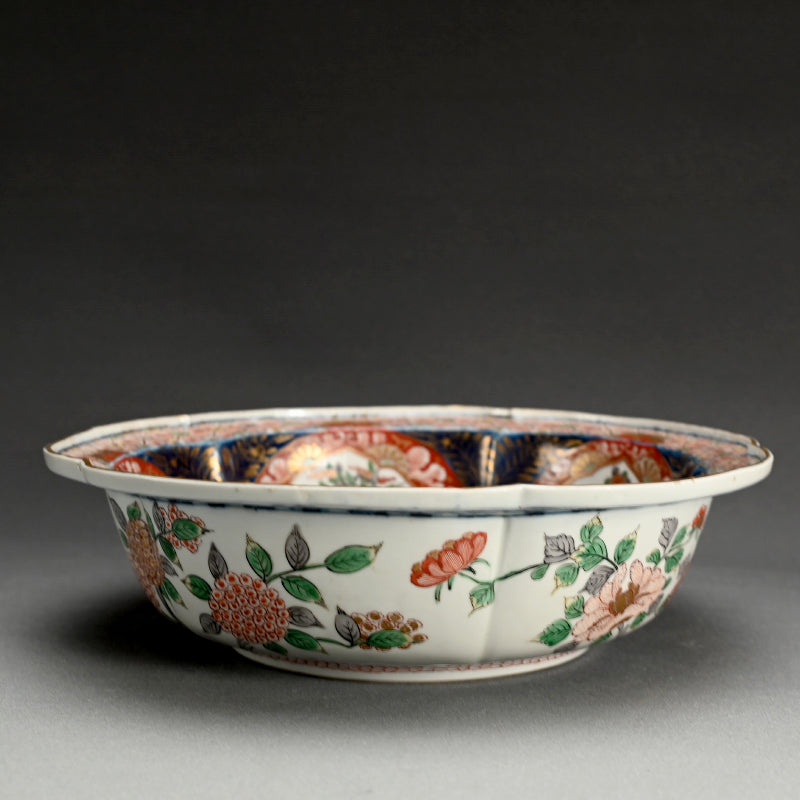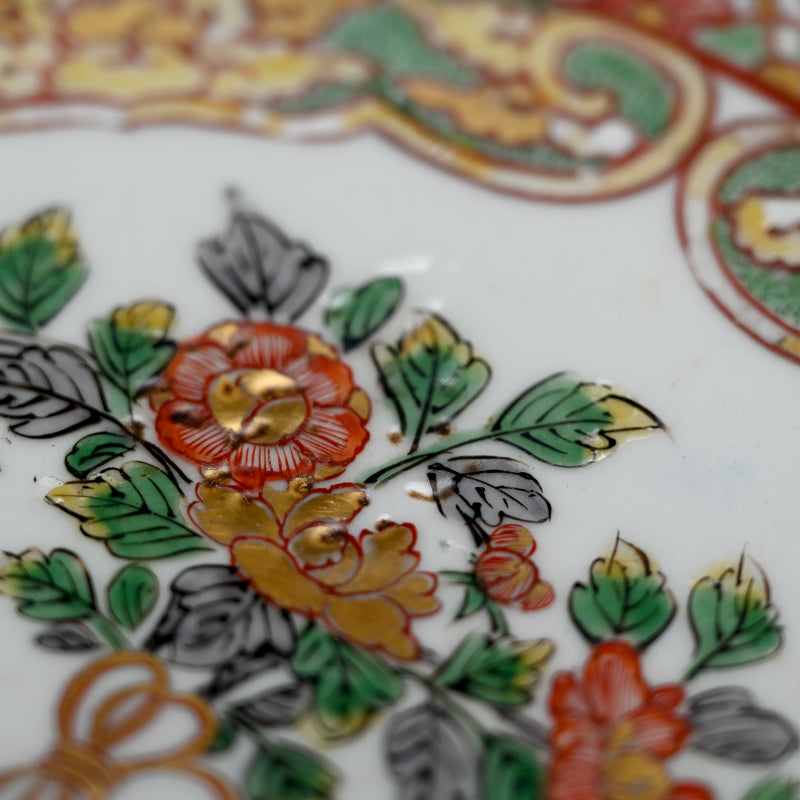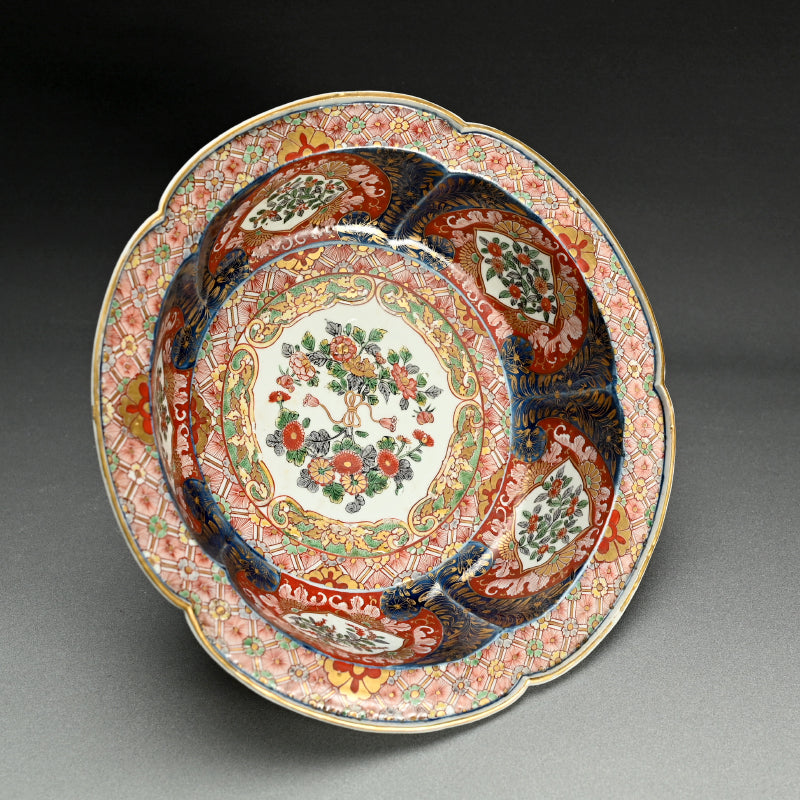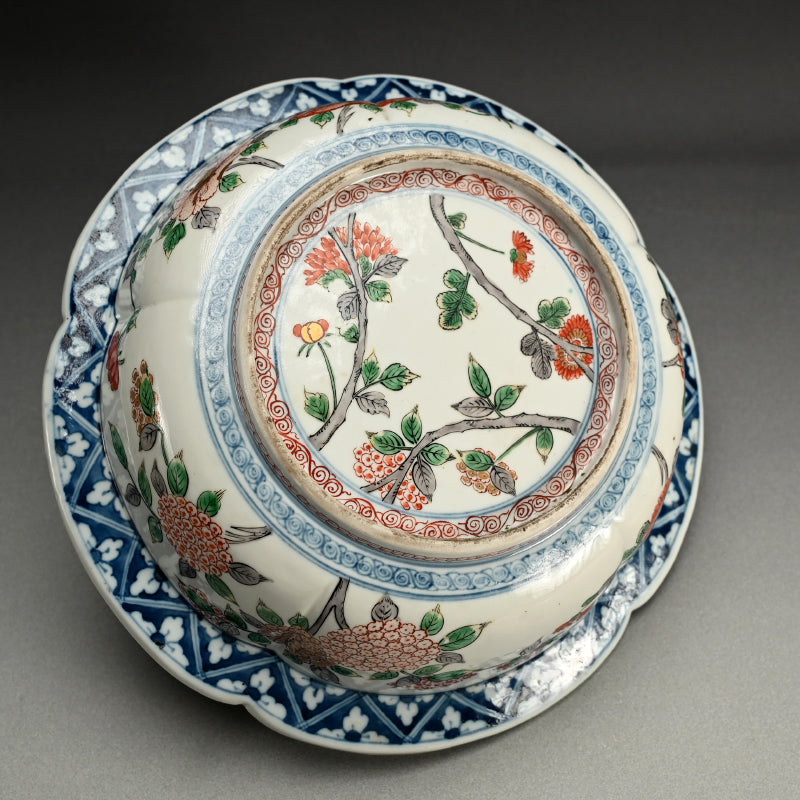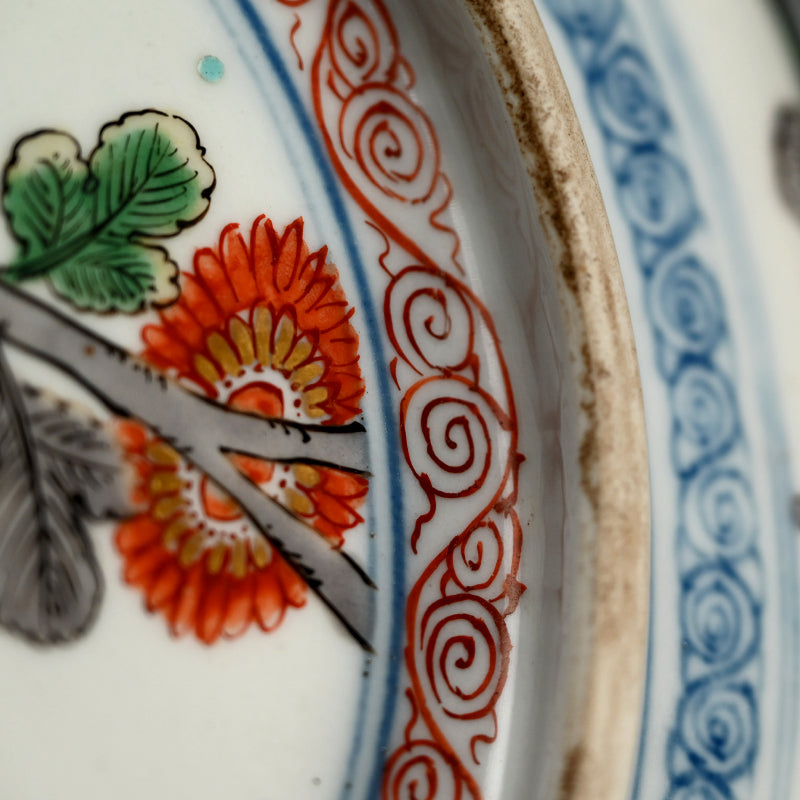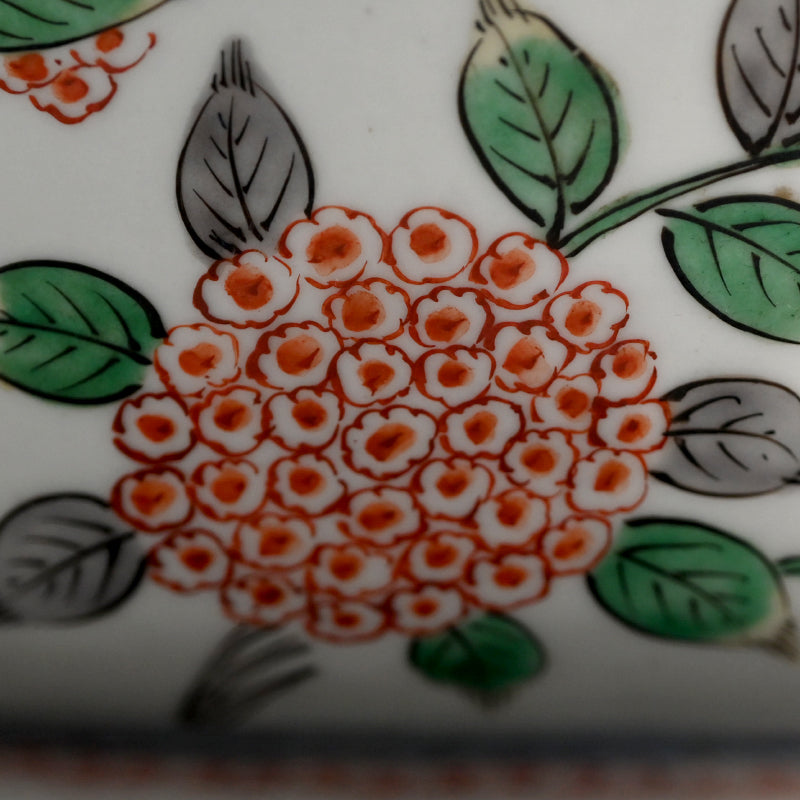1
/
of
14
Unusual Edo p. Large Imari Porcelain Bowl
Unusual Edo p. Large Imari Porcelain Bowl
Item Code: K641
Regular price
¥89,900 JPY
Regular price
Sale price
¥89,900 JPY
Unit price
/
per
Tax included.
Couldn't load pickup availability
A large and spectacular 5-lobed Imari Porcelain Bowl with a flaring rim covered in bold floral designs. outside and luxurious brocade designs inside dating from the 19th century, later Edo period. Very unusual, it is even decorated inside the foot ring. The bowl measures 36 cm (14 inches) diameter, 10.5 cm (4 inches) tall and is in excellent condition.
Imari porcelain, also known as Arita ware, has its origins in the early 17th century and is one of Japan's most renowned ceramic traditions. Porcelain production in the Imari region began around 1616 when Korean potters, brought to Japan after Toyotomi Hideyoshi's invasions of Korea (1592–1598), discovered high-quality kaolin clay in the Arita area of Kyushu. This marked the birth of Japan's first porcelain industry. During the early Edo period, Arita became a thriving center for porcelain production. The nearby port of Imari served as the primary shipping hub, leading to the porcelain being known internationally as "Imari ware." Early Imari wares were heavily influenced by Chinese designs, especially those from the Ming dynasty. Techniques evolved to include underglaze blue decoration (similar to Chinese blue-and-white porcelain) and, later, polychrome overglaze enamels, which became hallmarks of Imari porcelain. Imari porcelain gained widespread popularity in Europe during the 17th and 18th centuries, facilitated by the Dutch East India Company. European aristocracy prized its vibrant designs, which often featured intricate floral patterns, birds, and mythical creatures.
Japanese Antiques, Japanese Porcelain, Japanese Pottery, Japanese Ceramics
Imari porcelain, also known as Arita ware, has its origins in the early 17th century and is one of Japan's most renowned ceramic traditions. Porcelain production in the Imari region began around 1616 when Korean potters, brought to Japan after Toyotomi Hideyoshi's invasions of Korea (1592–1598), discovered high-quality kaolin clay in the Arita area of Kyushu. This marked the birth of Japan's first porcelain industry. During the early Edo period, Arita became a thriving center for porcelain production. The nearby port of Imari served as the primary shipping hub, leading to the porcelain being known internationally as "Imari ware." Early Imari wares were heavily influenced by Chinese designs, especially those from the Ming dynasty. Techniques evolved to include underglaze blue decoration (similar to Chinese blue-and-white porcelain) and, later, polychrome overglaze enamels, which became hallmarks of Imari porcelain. Imari porcelain gained widespread popularity in Europe during the 17th and 18th centuries, facilitated by the Dutch East India Company. European aristocracy prized its vibrant designs, which often featured intricate floral patterns, birds, and mythical creatures.
Japanese Antiques, Japanese Porcelain, Japanese Pottery, Japanese Ceramics
Share
